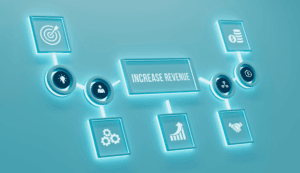They include all income statement accounts that report revenues, expenses, gains, and losses. On the other hand, permanent accounts keep a running tally of the company’s resources and claims against those resources, essentially providing a snapshot of a company’s financial health at any given time. They include all balance sheet accounts which report assets, liabilities, and also equity.
FAQ about Service Income
Temporary accounts cover revenue, expenses, gains, and losses and provide valuable insights into short-term financial activities. These insights are essential for evaluating profitability within specific accounting periods. In contrast, permanent accounts, which include assets, liabilities, and equity, maintain a continuous record of the company’s financial standing. This constant record supports long-term strategic decision-making and financial planning efforts. By recognizing the distinct roles of temporary and permanent accounts, businesses can effectively manage their finances, uphold transparency, and foster sustainable growth strategies. Salaries expense represents the amount a company pays its employees for services rendered during a particular period, such as a month or a year.
Credit Risk Management
- This continuity enables stakeholders to track financial position changes, monitor long-term trends, and make informed decisions about investment, financing, and operational strategies.
- At the end of an accounting period, companies reset a temporary account’s balance to zero with a closing entry that offsets its existing balance.
- These accounts track all costs incurred by the business to maintain operations within an accounting period.
- Its Cash Management module automates bank integration, global visibility, cash positioning, target balances, and reconciliation—streamlining end-to-end treasury operations.
- Classifying accounts as temporary or permanent influences financial statements by ensuring accuracy and transparency.
Examples include accounts receivable, cash on hand, patents and intellectual property, logos, investments, inventory, machinery, equipment, vehicles, furniture, and property or real estate. Understanding the distinction between everlasting and momentary accounts is vital for correctly making ready monetary statements. Everlasting accounts have to be closed out on the finish of every accounting interval, whereas momentary accounts should not.
📆 Date: June 28-29, 2025🕛 Time: 8:30-11:30 AM EST📍 Venue: OnlineInstructor: Dheeraj Vaidya, CFA, FRM
It refers to all activities a company performs to generate economic benefits to the business and its customers. Service revenue doesn’t include interest income or income earned from product shipments. Typically, service businesses have to employ a different strategy from product-based business is service revenue a permanent account to get good returns.
This continuity enables stakeholders to track financial position changes, monitor long-term trends, and make informed decisions about investment, financing, and operational strategies. Temporary accounts in accounting refer to accounts you close at the end of each period. Unearned revenue is the advance payments a business receives for services that have not yet been provided or earned. It represents a liability on the company’s balance sheet as the business is obligated to deliver the services in the future. Until the services are provided, the unearned revenue remains a liability.
Whether you’re just starting your business or you’re already well on your way, keeping organized financial records is a must. Download our FREE whitepaper, How to Set up Your Accounting Books for the First Time, for the scoop. Securities and Exchange Commission (SEC) that a public company must meet to recognize revenue. Discover the key financial, operational, and strategic traits that make a company an ideal Leveraged Buyout (LBO) candidate in this comprehensive guide. Verified Metrics has achieved SOC 2 Type 1 Certification, underscoring our commitment to data security, transparency, and reliability for our global community of finance professionals.
Why Don’t Temporary Account Balances Carry Over?
The primary objective of temporary accounts is to gauge a business’s net income or net loss during the accounting period. Revenue accounts, such as sales or service revenue, document income generated from core operations, while expense accounts, like salaries or utilities, track costs linked to revenue generation. Companies ascertain their net income or loss by deducting total expenses from revenues.
- With 7 AI patents, 20+ use cases, FreedaGPT, and LiveCube, it simplifies complex analysis through intuitive prompts.
- Get your personalized AR transformation roadmap and set your team up for success.
- According to this system, every entry has at least one other corresponding journal entry recorded in another account and the two will cancel out.
- A leveraged buyout (LBO) is a transaction in which a company or business is acquired using a significant amount of borrowed money (leverage) to meet the cost of acquisition.
Service income is taken into account a brief account as a result of it represents revenue earned over a particular interval. As such, it’s closed to the revenue assertion on the finish of the fiscal yr to find out the online revenue for the interval. This course of resets the service income account to zero, permitting for the buildup of income within the subsequent interval. However, a majority of businesses choose to close them on a quarterly basis. Manually classifying every transaction into a temporary versus permanent account is time-consuming. Aside from figuring out where each transaction must go, accountants must verify them and record journal entries appropriately.
In contrast, permanent account balances are deducted with transaction amounts and carried forward. In essence, a temporary account lasts for a defined period, while a permanent account lasts for as long as the business is operational. Temporary and permanent accounts offer accountants a method of classifying these transactions appropriately.
It provides insights into both short-term performance and long-term financial health. Unlike temporary accounts, you do not need to worry about closing out permanent accounts at the end of the period. Instead, your permanent accounts will track funds for multiple fiscal periods from year to year. Temporary accounts classify and describe a company’s financial transactions for a designated period of reporting. At the end of the fiscal year, the balances in these accounts are shifted, resulting in a zero balance to start the new accounting period. Automation minimizes human error by ensuring that transactions are recorded accurately in both temporary and permanent accounts.
Temporary and permanent accounts serve important and distinct functions in business accounting. Temporary accounts allow a business to make an accurate accounting of its performance for a specific reporting period. Permanent accounts enable the business to calculate and report on the financial status of the business over time from one period to the next and over multiple periods.
Automated systems can generate and post closing entries, transfer balances to permanent accounts, and prepare the necessary financial reports with minimal manual intervention. In essence, temporary accounts are instrumental in capturing a business’s financial performance, organizing financial data, and supporting decision-making processes. Closing these accounts at period-end ensures accurate financial reporting and primes the business for subsequent accounting periods. At the end of an accounting period, closing out all temporary accounts and transferring their balances to the appropriate permanent account (usually Retained Earnings) is necessary. This process, known as “closing the books,” resets temporary accounts to zero so they’re ready to track activity in the next period.
These feed into, and help the business report, its actual earnings, or net profit, for the accounting period in question. How a business performs from one period to the next is not reflected by the transactions in the preceding periods, which is why temporary account transactions will not be reported again. In business accounting, some transactions have a short-term, or one-time, impact on the financial affairs of the operation, while the effect of other transactions is more long-term and sustained. To help separate these two types of activities, businesses record them in either temporary or permanent accounts.
Apple’s shares have increased by roughly 32.5% this year despite the anticipated decline in sales. With the holidays approaching, the business is approaching its busiest quarter, which is when its earnings report is announced. Apple reported its fourth consecutive revenue drop for the September quarter, with $89.5 billion in revenue.




